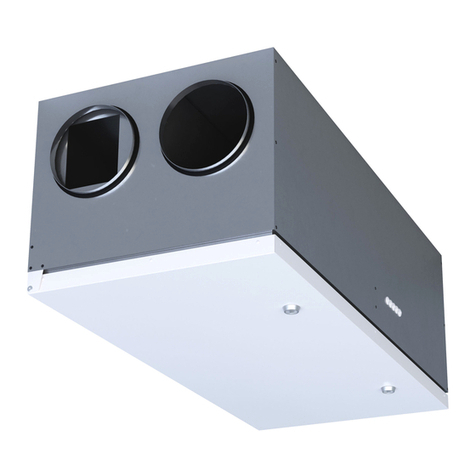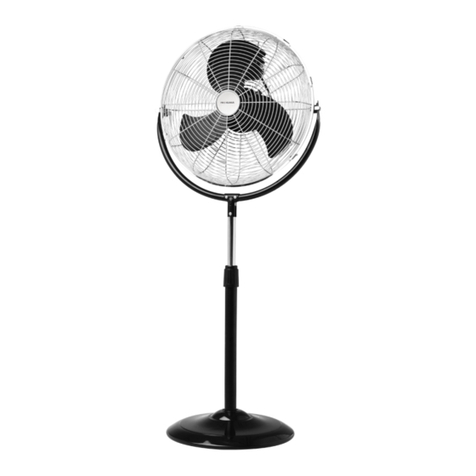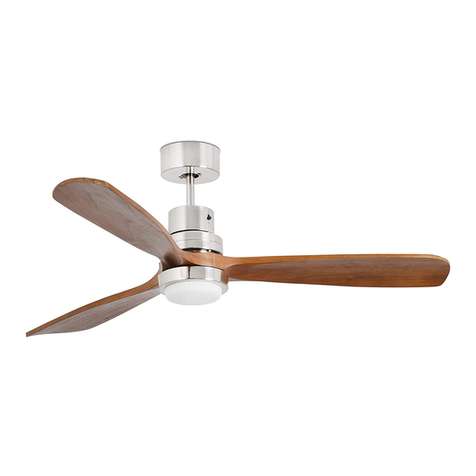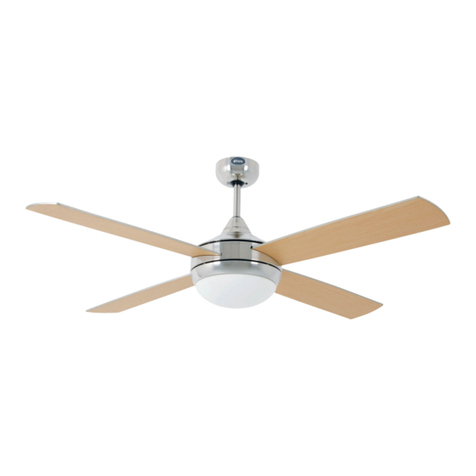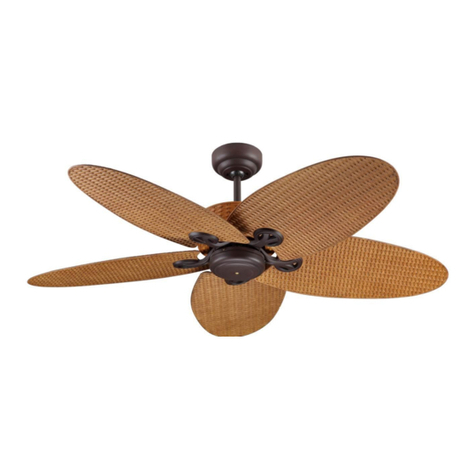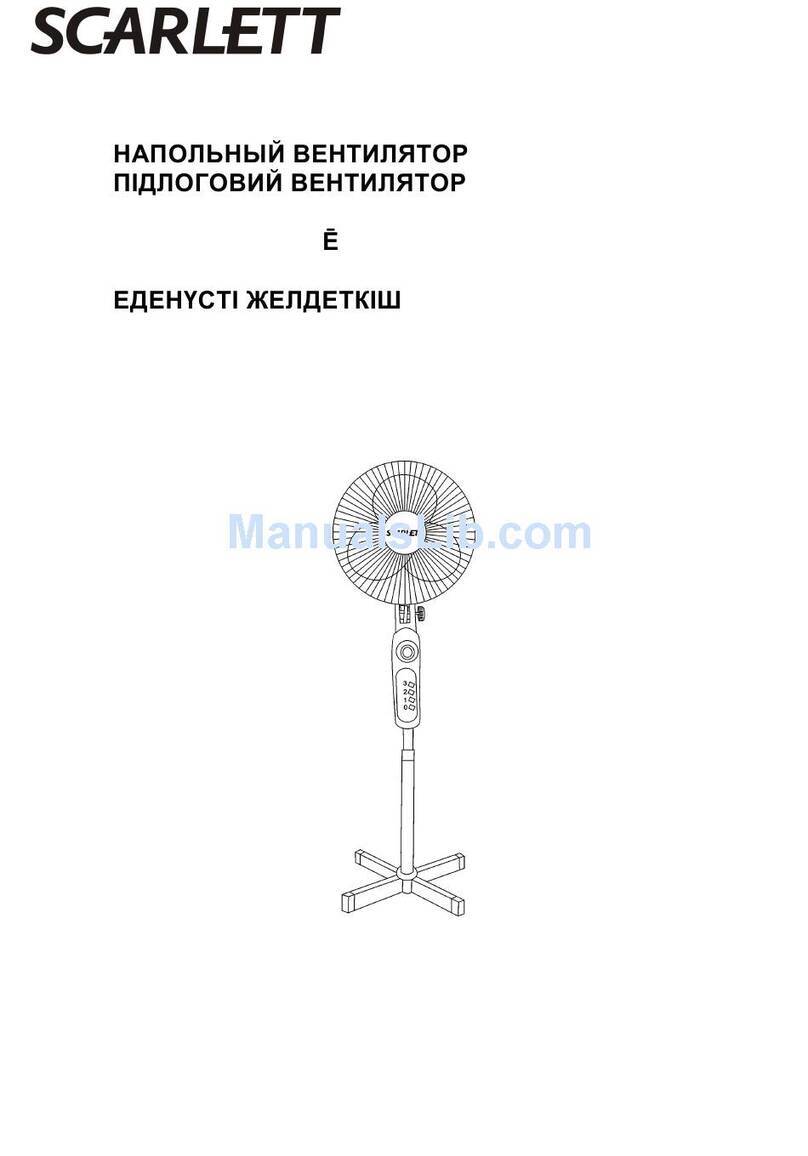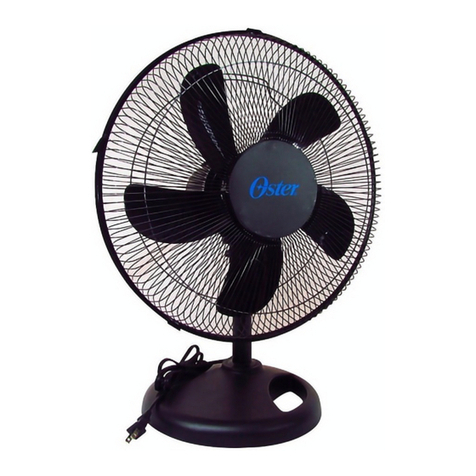Kemlan CELESTIAL 900 WITH FAN Manual

Specialists in fireplace design and manufacture
CELESTIAL 900 WITH FAN
INSTALLATION & OPERATING INSTRUCTIONS
IMPORTANT:
INSTALLER, PLEASE LEAVE THESE INSTRUCTIONS WITH THE UNIT ON COMPLETION.
10 YEAR FIREBOX WARRANTY
The firebox is covered by a 10 year warranty.
Other parts are covered by a one year limited warranty.
Head Office –13 French Avenue, Brendale, Queensland 4500
Telephone –PH: (07) 3490 5500
Facsimile –FAX: (07) 3490 5520
Website: - www.jetmaster.com.au
Business hours: - Monday to Thursday 7:30am-4:00pm. Friday 7:30am-2:00pm
Email: - sales@jetmaster.com.au
20/08/2020 ver.5 1

E
A
G
F
CELESTIAL 900 WITH FAN AND HEAT DUCTING BOX FOR
MASONRY / HEBEL
B
H
I
D
H
DIMENSIONS
DESC. MODEL A B C D E F G H I J K L M
CELESTIAL 900 WALL INSERT 468 495 -608 1054 252 610 202 528 1180 672 776 268
LM
ver.5
J
K
FASCIA
960
442
20/08/2020 2

HEARTH MEASUREMENT
CELESTIAL 900
UNIT
B
A
A. UNIT HEIGHT ABOVE FLOOR 200 300 400 500 600 700
B. HEARTH DIMENSION FORWARD OF
UNIT 725 715 665 594 492 335
ver.5
UNDERNEATH UNIT
AND HEARTH
THICKNESS MUST BE
A MINIMUM 18mm
NON COMBUSTIBLE
MATERIAL FC SHEET
OR SIMILAR
20/08/2020 3

HEARTH REQUIREMENTS FOR
INSTALLATION ONTO A RAISED HEARTH
CELESTIAL 900
UNIT
X
Y
* NOTE: IF Y IS LESS THAN 200mm THEN REFER TO HEARTH MEASUREMENT ON PREVIOUS PAGE
X. MIN. DEPTH MEASUREMENT (mm) 300
Y. MIN. HEIGHT INCREASE (mm) 200*
ver.5
UNDERNEATH UNIT
AND HEARTH
THICKNESS MUST BE
A MINIMUM 18mm
NON COMBUSTIBLE
MATERIAL FC SHEET
OR SIMILAR
20/08/2020 4

BAFFLE PLATE INSTALLATION
1. REMOVE MIDDLE AIR TUBE BY PUSHING
UP AND REMOVING FROM FRONT AND
REAR BRACKETS.
2. PLACE ALL 4 BAFFLE PLATES ABOVE AIR TUBES
BOTH SIDES CLOSEST TO THE FIRE BOX WALL
AS SHOWN ( 2 LEFT AND 2 RIGHT)
3. PLACE BAFFLE PLATES AS FAR BACK AS
POSSIBLE, 212 MM FROM FRONT TO BACK.
222
4. BAFFLE PLATE SIDE OF 222 MM SHOULD EXTEND
FROM SIDE TO SIDE,
6. SLIDE THE BAFFLE PLATES ATOP THE OTHER
2 BAFFLE PLATES INTO THE MIDDLE POSITION
AS SHOWN. LEAVE GAP OF 1-2 MM IN
BETWEEN PLATES. THE GAPS SHOULD BE
ROUGHLY IN THE MIDDLE OF THE AIR
TUBES. UNIT IS NOW READY FOR USE.
5. RE- PLACE MIDDLE AIR TUBE BACK INTO
POSITION
( NB. MAKE SURE OPEN END OF AIR TUBE IS
PLACED INTO REAR OPENING. CLOSED END
TOWARDS DOOR. FAILURE TO INSTALL AIR
TUBES CORRECTLY WILL VOID WARRANTY.)
ver.5
20/08/2020 5

CELESTIAL 900 MASONRY
BLOCK CONSTRUCTION
C
DETAIL C
LINTEL
HEBEL BLOCKS
HEAT DUCTING
BOX
STD.
FASCIA
ver.5
15mm min. air gap
Register plate with vented upstands
Minimum 600mm below ceiling.
Insul wool (supplied by installer) can
be placed on top of register plate
1 row of Hebel or brick to be used above
register plate before timber frame work is used
Ceiling
Triple skin flue system
(10”, 8” and 6”)
Stainless steel flue pipe.
All flue pipes must be
connected with pop rivets
supplied by installer
Rear of unit to
Hebel Block –25mm min.
Hebel Block –
min. thickness –75mm
25mm min. clearance between
10” flue and framing
6” Flue
Inlet air vents into chase
Outlet air vents from chase
DETAIL A
All
8”-10” assembled flues must
have the crimps pointing upwards
crimped
plain
All 6” assembled flues must have
the crimps pointing downwards
crimped
plain
DETAIL B
B
A
Flue system to be installed
to suit AS/NZS 2918.2001
9mm Fibre
cement sheet
Combustible Frame
Hebel or brick construction
to the ceiling
20/08/2020 6

ver.5
NOTE:
1. Minimum 55mm air gap between
unit and masonry for air circulation
2. Top and bottom vents are required
for convection of cavity air
3. 25mm clearance between masonry
and timber frame work
4. Minimum 75mm of masonry material
hebel or similar
600mm min.
Below ceiling
Triple skin flue system
(10”, 8” and 6”)
Flue system to be installed
to suit AS/NZS 2918.2001
25mm min. clearance between
10” flue and ceiling/framing
Inlet air vent 240 x 90
6” Flue
Outlet air vent 240 x 90
Located on the front or
side of the chase
55mm air gap
9mm Fibre cement
sheet
Register plate with
vented 8” and 10” upstands
600mm min. below ceiling
CELESTIAL 900 MASONRY
BLOCK CONSTRUCTION
Combustible
material
25mm air gap
20/08/2020 7

ver.5
1165
650
NOTE:
THE APPLIANCE WILL NEED 505mm DEEP OPENING TO THE BACK OF CHASE
CELESTIAL 900 MASONRY
OPENING CUT SIZE
20/08/2020 8

ver.5
15mm CLEARANCE
15mm CLEARANCE
BETWEEN PYROTEK AND
COMBUSTIBLE MATERIAL
25mm PYROTEK BOARD
ASSEMBLY
COMBUSTIBLE
MATERIAL
PYROTEK ZERO CLEARANCE
INSTALLATION
CEILING
NOTE: FRONT FACE ONLY
NEEDS TO BE NON
COMBUSTIBLE TO CEILING.
NOTE: SIDES AND BACK
CAN BE COMBUSTIBLE
9mm FIBRE CEMENT /
13mm FYRECHECK
OR SIMILAR PRODUCT
FRONT FACE NEEDS
TO BE ALL NON
COMBUSTIBLE MATERIAL
STEEL TRACK
25mm PYROTEK BOARD
ASSEMBLY
TOP VIEW
FRONT VIEW
TIMBER FRAME 15mm
CLEARANCE FROM
ZERO CLEARANCE BOX
COMBUSTIBLE
MATERIAL
25mm CLEARANCE
FROM OUTER FLUE
TO COMBUSTIBLE
MATERIAL
20/08/2020 9

ver.5
A
B
J
H
I
C
DE
F
G
L
K
A B C D E F G H I J K L
CELESTIAL 900 WITH FAN 933 1254 523 626 626 1073 215 623 95 295 228 304
DIMENSIONS FOR WHITE
BOARD ZERO CLEARANCE BOX
20/08/2020 10

CELESTIAL 900 FASCIA INSTALLATION
INFORMATION
1.OPEN THE DOOR TO ABOUT 70 DEGREES
TO THE FRONT OF THE FIREBOX. LIFT
THE DOOR UPWARDS UNTIL THE DOOR
CLEARS THE HINGES AND MOVE IT OUT OF
THE WAY.
ver.5
2. THREAD ONE SCREW AND ONE WASHER
(SUPPLIED) TO EVERY NUT SERT SHOWN. MAKE
SURE THE WASHER IS AS CLOSE TO THE SCREW
HEAD AS POSSIBLE. LEAVE ENOUGH GAP FOR
THE FASCIA TO SLIDE BETWEEN THE BOX AND
THE WASHER.
3. BEND THE SILICONE TABS INTO POSITION. THIS
TAB SHOULD BE PARALLEL TO THE FRONT OF
THE FASCIA WHEN IN THE CORRECT POSITION.
4. SLIDE FASCIA INTO THE REQUIRED POSITION
THEN HAND TIGHTEN THE SCREWS AS
REQUIRED OR USE AN APPROPRIATE ALLEN
KEY OR PLIERS. USE A TOUCH UP PAINT ON
THE SCREW HEADS AS REQUIRED.
5. RE INSTALL THE DOOR BACK ON. USE THE
REVERSE METHOD TO REMOVAL ON POINT 1. 6. DOUBLE CHECK TO MAKE SURE THE DOOR
CLOSES PROPERLY AND DOES NOT TOUCH
THE FASCIA. THE INSTALLATION SHOULD BE
COMPLETE.
20/08/2020 12

ver.5
CELESTIAL 900 WITH FAN
DOOR ADJUSTMENT INFORMATION
1. OPEN THE DOOR AS FAR AS REQUIRED, AND
THE ADJUSTMENT ANGLE IS ACCESSIBLE. 2. MARK THE POSITION OF THE ADJUSTMENT
ANGLE ON THE FIREBOX. IT IS CRITICAL TO
PUT THE ADJUSTMENT ANGLE AT THE SAME
SPOT. SO THAT THE DOOR WILL LOCK
PROPERLY.
3. LOOSEN THE 2 BOLTS AS REQUIRED. DO NOT
UNSCREW THE BOLTS ALL THE WAY OUT.
4. PUSH THE PACKER FROM THE BOTTOM EDGE
OF THE ADJUSTMENT ANGLE UNTIL FULLY
REMOVED. ONLY TAKE OUT WHAT IS
NECESSARY. RE-POSITION THE ADJUSTMENT
ANGLE AT THE MARKERS AND TIGHTEN.
NOTE: UP TO 4 PACKERS CAN BE REMOVED IF
NECESSARY.
5. CLOSE THE DOOR AND CHECK IF THE LATCH
LOCKS PROPERLY, THE ADJUSTMENT IS
COMPLETE IF NO ADJUSTMENT IS NEEDED.
20/08/2020 13

ver.5
CELESTIAL 900 WITH FAN
REMOVAL / INSTALLATION
1. REMOVE 2 SCREWS HOLDING THE FAN
CASSETTE IN PLACE 2. UNPLUG THE FAN CONNECTOR FROM THE
FASCIA CONNECTOR, UNSCREW THE EARTH
WIRE FROM THE APPLIANCE . REMOVE THE
FASCIA
3. PULL THE FAN CASSETTE AWAY FROM THE
APPLIANCE, ABOUT HALF WAY OUT, THEN
GENTLY PULL THE FAN WIRE LOOMS BACK
INTO THE FAN CASSETTE.
4. CONTINUE PULLING THE FAN CASSETTE OUT
AND TILT UP THE FRONT EDGE OF THE FAN
CASSETTE AT THE LAST MOMENT TO
RELEASE IT FROM THE APPLIANCE CAVITY
5. PULL FAN CASSETTE AWAY FROM THE
APPLIANCE.TAKE NOTE OF THE FAN
POSITION WHILST STILL IN THE CASSETTE.
THIS WILL BE IMPORTANT DURING RE-
INSTALLATION.
EARTH WIRE CONNECTORS TO FASCIA
CONNECTORS TO FAN WIRES
6. USE A FLAT SURFACE AND LAY THE FAN
CASSETTE UPSIDE DOWN. REMOVE THE 2
SCREWS HOLDING THE FAN ASSEMBLY. THE
FAN SHOULD NOW BE FREE. REPLACE THE
FAN AS REQUIRED IN THE ORIGINAL POSITION
INSTALLATION IS JUST THE REVERSAL OF THE
STEPS OUTLINED
CONNECTOR TO FASCIA
20/08/2020 14

3000 OR LESS
INSTALLATION INSTRUCTIONS
MINIMUM HEIGHT OF FLUE SYSTEM EXIT
INSTALLATION TO COMPLY WITH AS/NZS 2918
INCREASE FROM 1000 MIN
UNTIL CLEAR WITHIN 3000 OF
TOP OF FLUE
3000
ANY NEARBY
STRUCTURE
3000 MORE THAN 3000
600 MIN 3000
1000 MIN IF CLEAR WITHIN
3000 OF TOP OF FLUE
INCREASE AS NECESSARY UNTIL
NOTHING WITHIN 3000 OF FLUE TOP
600 MIN
3000 OR LESS
ver.520/08/2020 15

ver.520/08/2020 16

INSTRUCTIONS FOR OPERATING YOUR
KEMLAN SLOW COMBUSTION WOOD
BURNING HEATER
1. Open the air inlet fully by sliding the air inlet control to high.
2. Crumple at least three double pages of newspaper into loose balls and place them into the centre of the
firebox.
Cross lay at least 15 to 20 pieces of kindling on top of the paper –if pine is used, the size should vary from
the thickness of a pencil to that of a knife handle –if hardwood is used split it even smaller.
3. Light the paper and close the door.
Once the kindling is well alight, add a few pieces of slightly larger hardwood, split to approximately 25mm x
50mm (2” x 1”).
4. Close the door and leave the air inlet control on high. When the hardwood is well alight (usually 5
to10minutes) and coals are starting to form, larger pieces of hardwood may be added –five or six pieces the
equivalent of 50mm x 50mm (2” x 2”) is ideal.
The object is to create a fiercely burning fire of reasonable small hardwood, which will quickly produce a
good bed of glowing coals on the floor of the firebox. This will take from 20 to 40 minutes depending on the
quality of the firewood.
5 Larger pieces of hardwood may now be added. Half fill the firebox and leave the air inlet control on high until
the wood is well alight then close the control approximately a third of its travel.
Usually about one hour after lighting, the air inlet control can be further shut down to achieve the desired
heat output.
When adding new firewood it is desirable to fully open the air inlet for approximately 10 to 15 minutes until
the new pieces are burning well, then it may be returned to its desired setting.
6. To set the fire for overnight burn –two-thirds fill the firebox with hardwood and fully open the air inlet.
Once the fire is burning well, the air inlet control should be shut down approximately three-quarters of its
travel. Setting the air inlet control may be varied to suit your particular requirements and the quality and size
of your firewood.
Remember wet or green wood may cause a dramatic reduction in the heat output of your heater (refer to
“Operating Hints” for more details).
7. Have the flue inspected at least once every 12 months as it may require cleaning.
8. Clean out excess ash from the floor of the firebox when required. Do not remove all the ash and in particular
leave any pieces of charcoal in the heater as they are good fuel.
9. If the glass door in your heater becomes dirty, your firewood is either green, wet or both. You may be
closing the air inlet down too soon after lighting or after adding new firewood.
To clean the glass, simply use some of the white ash in the firebox. Apply it with a damp cloth in a circular
motion. Remove residue with a clean cloth or paper. Do not clean the glass when the heater is operating.
10. To clean the painted surface, simply dust with a soft duster and wipe over with a damp cotton cloth. Only
clean when the heater is cool.
IMPORTANT:
UNDER NO CIRCUMSTANCES SHOULD ANY SOLVENTS SUCH AS METHYLATED SPIRITS, PETROL, MINERAL
TURPENTINE ETC BE ALLOWED TO COME IN CONTACT WITH THE PAINTED SURFACE OF THE HEATER AS
DAMAGE TO THE FINISH WILL RESULT. IF AN ACCIDENT DOES OCCUR, SPRAY CAN PAINT IS AVAILABLE FROM
YOUR NEAREST KEMLAN DEALER.
ver.5
20/08/2020 17

ver.5
20/08/2020 18

OPERATING HINTS
To get the best from your Kemlan heater it is essential that you use good firewood, and use it correctly Many people do not understand the
principle of using a wood burning appliance and we suggest that it will be worth your while to study the following extract from a well known
American publication.
PRINCIPLES OF COMBUSTION: HOW WOOD BURNS
Technically, wood does not burn. What burns is the volatiles and charcoal that are created. That is why wood will not catch on fire
immediately when you put a match to it; it has to first undergo the chemical changes that create the volatiles, and a match does not create
enough heat to activate the process. As kindling and paper evaporate the moisture in the wood, the wood absorbs heat. At a certain point,
gases are given off and when these volatiles reach 480 degrees F, or the “Flash point”, as it is called, they will burst into flame if sufficient
oxygen is present. The volatiles give off more heat than does charcoal, which is why a fire with flames (which burn the volatiles) produces
more heat than one that is all charcoal.
Since the volatiles are gases and since heat rises, taking the gases with it, it is very easy to create a situation in which most of the volatiles go
up the chimney almost as soon as they are produced. This is what happens with a roaring fire and, to a lesser extent, with an open fire. One of
the reasons (but only one) that a freestanding wood stove produces more heat than an open fire is that the volatiles are contained within the
firebox and are not so quickly dissipated up the chimney. A stove that is baffled is merely one that has interior construction design to keep the
volatiles in the firebox longer; the longer they are in the firebox, the more completely they burn. The more completely they burn, the more heat
is produced. It’s that simple.
Since the flames burn the volatiles and produce heat, the ideal situation is the longest possible flame path. As soon as wood burners
understand this, they tried to devise ways of making the flame path longer than in an ordinary open fire. Even though the role of oxygen in
combustion was not under- stood in Ben Franklin’s time, Franklin did realize the importance of more completely burned volatiles. His solution
was to try to invent a downdraft stove
–one that sent the volatiles back down through the fire –but he never succeeded in getting it to work. A downdraft goes against the nature of
volatiles, which is to rise. In more recent times, there have been some successful downdraft –or partial downdraft –stoves created and some
of the fireplace stoves and units utilise this principle. Ideally, it would be best if the volatiles could be redirected down through the fire several
times, until they were al- most totally consumed. This would not only make the maximum use of the heat potential of the wood; it would reduce
creosote build-up to almost zero. Perhaps someday an ingenious inventor will design a unit that does this; so far no has been able to.
MOISTURE AND COMBUSTION
As we have seen, dry wood ignites faster and burns better –with higher heat production –than wet or green wood. The difference between
the amount of heat produced by dry wood and green wood is so great that a dry softwood of good grade will produce more heat than green
hardwood. Green white ash, for instance, is not as good a fuel as dry tamarack.
The reason for the superiority of dry wood is easy to understand. Heat cannot be produced until moisture has been driven off. Since even so-
called seasoned dry wood contains approximately 20 percent moisture, it takes time for any fire to begin producing useable heat. Wet wood,
which can have a moisture content of over 100 percent (due to the way moisture is measured), will take that much longer to produce heat.
Meanwhile, the fire will produce smoke and creosote and very little heat. This was brought sharply to my attention when I installed my first
wood heater. To my surprise and delight, I found it comfortably heated eight rooms, where I had expected to heat only two or three. After
some time, when I had someone helping me run the fire, I suddenly noticed that the house was chilly. We added more wood and adjusted the
draft controls, but nothing we did seemed to help. It finally occurred to me to check the woodpile. My friend had been getting green wood from
a stack that was drying, instead of from the dry-wood stack. The difference the green wood made was so dramatic I will never forget it.
HOW TO TEST WOOD FOR DRYNESS
There are two easy ways for even a novice to spot dry wood. Dry wood tends to “check”. Look at the log ends and you will see cracks radiating
from the centre of the log. If the logs have been split, the cracks will be harder to find because wood tends to split along the cracks.
Another test for dry wood is the sound it makes when two logs are banged against each other. Green wood will make sort of a dull thud; dry
wood makes a nice crisp, sharp sound. Once you have heard the two, you will remember the difference.
FROM THE ABOVE EXTRACT SEVERAL FACTS BECOME APPARENT:
1. It is vital that your firewood be dry and seasoned.
2. A good hot fire of kindling and smaller pieces of fuel must be established before adding larger logs.
3. The larger logs should be well alight before slowing down the combustion by adjusting the air intake.
4. A hot bed of coals needs to be maintained to ensure continued combustion in the firebox.
5. When new timber is added to the firebox the air control should be opened until the fuel is well alight before damping it down again. This will
take from 10 to 20 minutes.
6. When setting the controls for overnight burn you will need to experiment with the settings to suit your particular type of fuel. Very dense
hardwood requires more air to combust and over damping will result in charring and smoking causing the glass in the door to become dirty.
The same will apply with fuel which is not fully seasoned or is not dry enough. Kemlan have followed a policy since 1969 of checking on all
complaints about poor performance of their heaters and apart from a few instances of incorrect installation (mostly insufficient flue length) all
problems have been directly related to incorrect operation and/or poor fuel. We know you will experience many years of satisfaction from your
heater if you follow the above advice.
ver.5
20/08/2020 19

ver.5
WARRANTY
1. Kemlan wood heaters carry a warranty on the 6mm firebox for a period of ten (10) years.
2. This warranty also covers other components of the heater for a period of one (1) year. These components
include the baffle plate, handle assembly, secondary air tubes and fan.
3. Kemlan’s warranty covers the wood heaters against defects in materials and manufacture.
4. THIS WARRANTY DOES NOT COVER –
4.1 Failure to comply with manufacturer’s operation instructions.
4.2 Normal wear and tear or damage caused by incorrect installation.
4.3 Any form of rust and/or corrosion to the painted finish of the heater.
4.4 Damage to the glass in the door, if the damage is caused by impact or misuse.
4.5 The cost of collection and delivery of the wood heater and/or parts.
4.6 Damage caused by water ingress.
4.7 Cost of removal of defective heater or re-installation of replacement heater.
4.8 Failure to use fireplace components supplied by Kemlan Industries Pty Ltd.
4.9 Cost of inspection for damaged heater.
5. CLAIMS –
5.1 (I) Kemlan will provide a full replacement of the heater in the first five years after installation.
(ii) Replacement in the subsequent five years (i.e. sixth to tenth year after installation will be on the
following basis.
Owner will pay fifty percent of the current retail price, if the claim is made in the sixth year –tenth year
after purchase.
5.2 Replacement of heater subject to all conditions in section four of warranty.
5.3 Should any defects occur, contact the Kemlan distributor from whom you purchased the heater.
5.4 Under this warranty the defective parts will be repaired or replaced, free of charge.
6. The fireplace installation must comply with the relevant local statutes, ordinances, regulations and by-
laws.
7. THIS WARRANTY IS VOID IF:
7.1 The appliance has been over-fired or operated in atmospheres contaminated by chlorine, fluorine or other
damaging chemicals. Over-firing can be identified by, but not limited to, warped plated or tubes, rust
coloured cast iron, bubbling, cracking and discolouration of steel or enamel finishes.
PLEASE COMPLETE AND RETAIN THIS SECTION FOR YOUR
RECORDS
Purchased from: .......................................................................................................
Address: ....................................................................................................................
Date of Purchase: ......................................................................................................
20/08/2020 20

ver.5
NOTES
20/08/2020 21
Table of contents
Popular Fan manuals by other brands
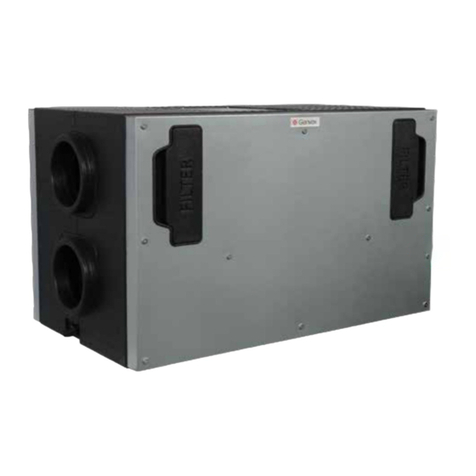
Genvex
Genvex ECO 300 installation instructions

Atlas fan company
Atlas fan company Molly instructions
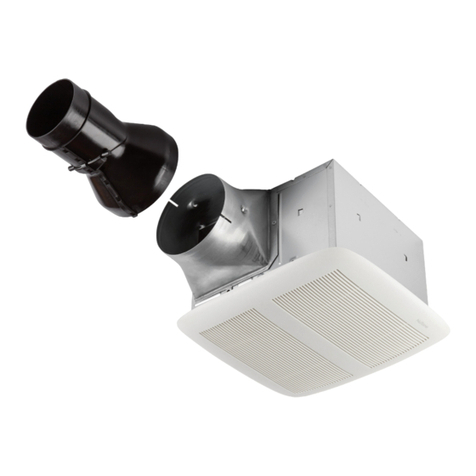
Broan
Broan NuTone ULTRA Pro RN80C installation guide
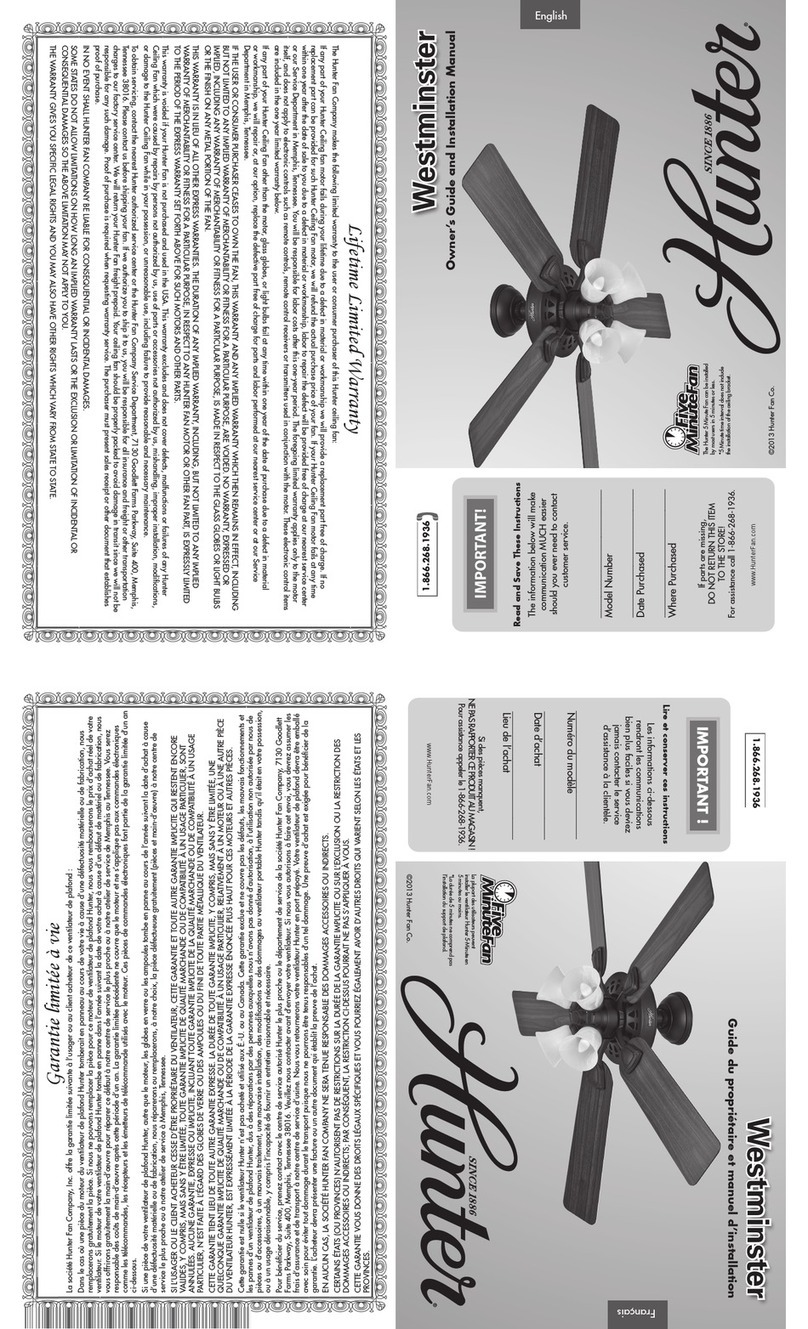
Hunter
Hunter Westminster Owner's guide and installation manual
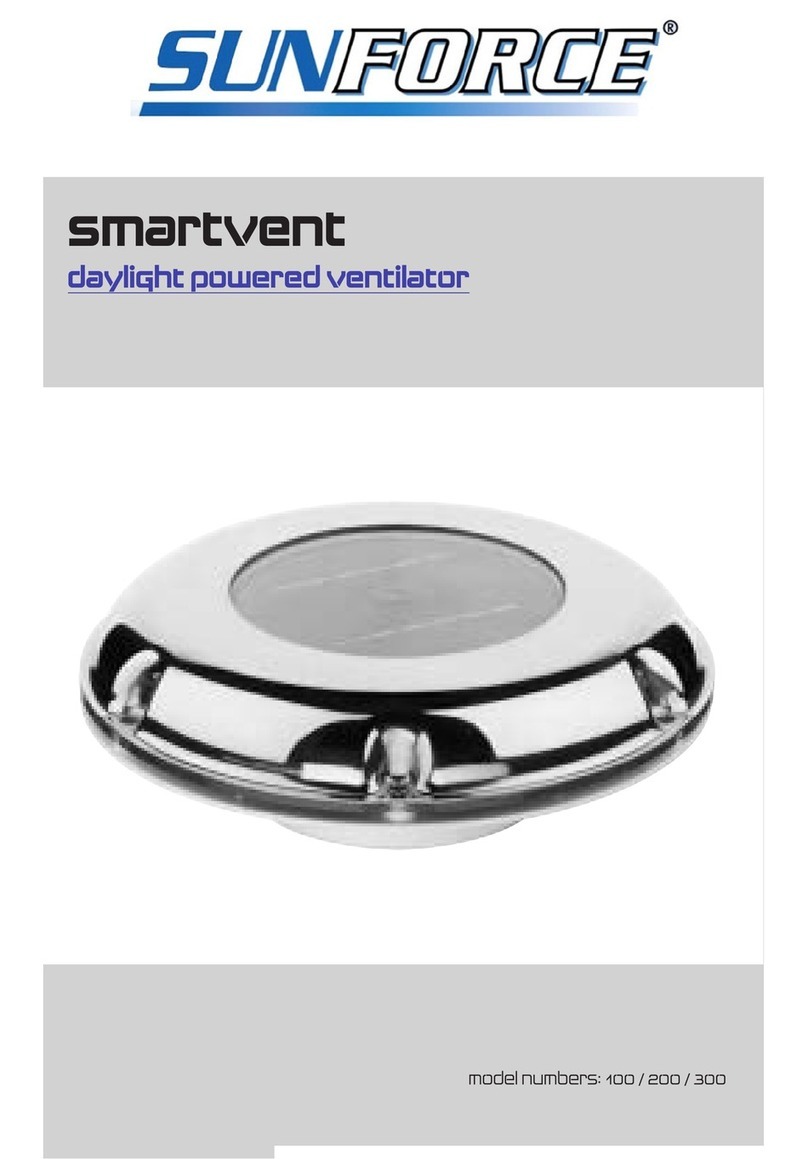
Sunforce
Sunforce Smartvent 100 instruction manual

Fanimation
Fanimation SLINGER LP8147SLMWBN manual
